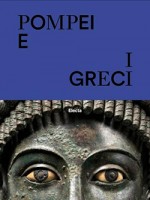Nestling in the countryside near Naples on the shores of the Mediterranean, Pompeii, like most ancient Italian towns, had close contacts with the Greek world, as records going back to before the town’s foundation show.
“Pompeii and Greece” tells the tale of an unexpectedly Greek Pompeii through archaeological finds and their characteristics, with pottery, ornaments, arms, architecture, sculpture from Pompeii, Metapontum, Poseidonia, Cuma, Capua and Gela, inscriptions in the various languages spoken locally – Greek, Etruscan, and Early Italian – funerary objects from different parts of the Mediterranean, traces of the town’s very first baths, reproductions of Greek statues and plaques; all bear witness to the close relationship between Greece and Pompeii.
The works come from Pompeii itself and from several leading Italian and European museums, some of them returning to their native Italy for the first time.
The exhibition illustrates the details of a non-linear, multi-centric Mediterranean history based on complementary models, with multiple, sometimes contrasting identities and fascinating layers of overlapping cultures which ebbed and flowed like the tide of Mare Nostrum.
A history which could well lead us to reflect on life today, a kaleidoscope of migrations and conflicts, of cultural convergence and divergence in a dynamic world.
Start date
Wednesday 12 april 2017
End date
Monday 27 november 2017
Scavi di Pompei
Palestra Grande
80045 Pompei (NA)
go to site
Informations
Go to the website
Curated by
Massimo Osanna and Carlo Rescigno
Promoted by
Soprintendenza di Pompei with Electa organization

